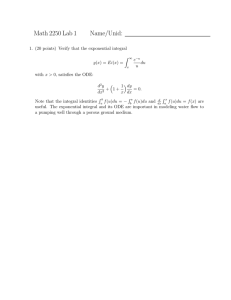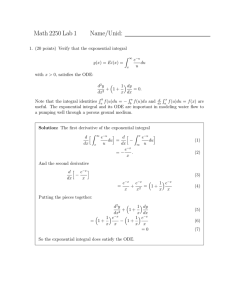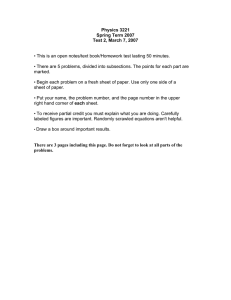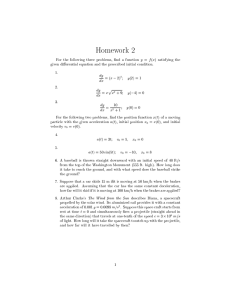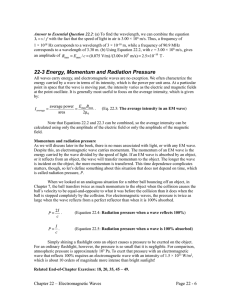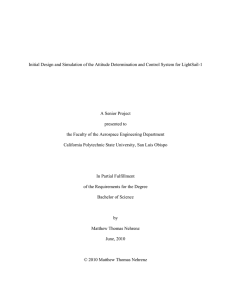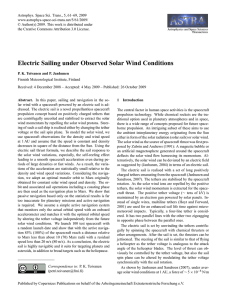Math 2250 Lab 1 Name/Unid:
advertisement
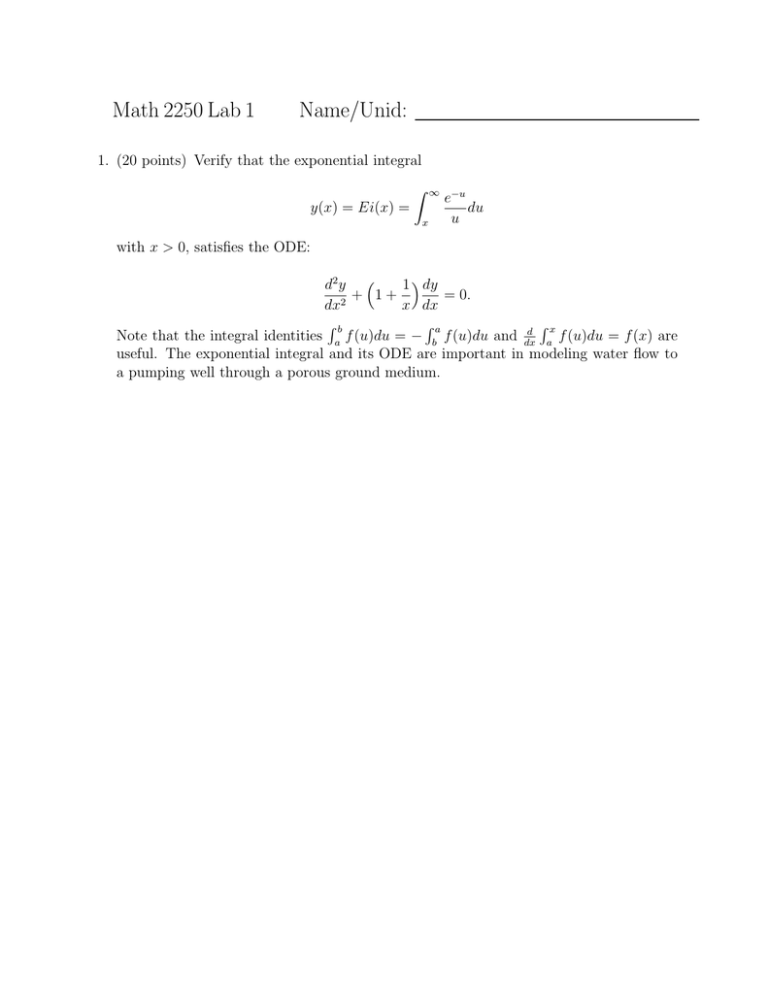
Math 2250 Lab 1 Name/Unid: 1. (20 points) Verify that the exponential integral Z y(x) = Ei(x) = x ∞ e−u du u with x > 0, satisfies the ODE: d2 y 1 dy = 0. + 1 + dx2 x dx Ra Rx Rb d f (u)du = f (x) are Note that the integral identities a f (u)du = − b f (u)du and dx a useful. The exponential integral and its ODE are important in modeling water flow to a pumping well through a porous ground medium. 2. (20 points) Suppose a car skids 20 meters if it is moving at 50 km/h when the brakes are suddenly applied. Assuming the car has a constant deceleration, how far will the car skid if it is originally moving at 100km/h when the brakes are applied? Page 2 3. (a) (20 points) A 1000 kg spacecraft can use the force imparted from solar radiation to “sail” through space using a reflective sail made of aluminum foil. The suppose the solar force is constant, equal to 0.0001 Newton per square meter of sail. Suppose the craft’s sail is 200 m2 . If the spacecraft starts with zero initial velocity at postion x = 0, how long will it take for the spacecraft to reach one tenth the speed of light (c ∼ 3 × 108 m/sec)? Page 3 (b) (20 points) Suppose a 100kg rocket-powered spacecraft fires its rockets at the same time and position as the solar sail craft in the problem above. The rocked produces a trust force Fr = 1/(1 + t) over time, in which the force dissipates as the rocket burns down all its fuel. Find the position of the rocket as a function of time x(t). At what position x will the sail craft overtake the rocket-powered spacecraft? Page 4 4. (20 points) Reconstructing the position function from a graph of the velocity function: A car is traveling along a marked road which we may consider equivalent to an x-axis. Set x0 = x(0) = 0. Recorded below is a graph of the car velocity v(t) in miles per minute. 2 v miles/min 1.5 1 0.5 -0.4 0 0.4 0.8 1.2 1.6 2 2.4 2.8 3.2 3.6 4 t -0.5 -1 (a) Find a formula for x(t), for the interval 0 ≤ t ≤ 4 minutes, and graph x = x(t). Page 5 (b) Use the formula for x(t) to determine how far the car traveled in those 4 minutes. (c) The distance the car traveled is also computable in terms of an area associated to the velocity graph. The reason has to do with the Fundamental Theorem of Calculus. Explain the connection, and verify that this area agrees with your answer from the previous part. Page 6
